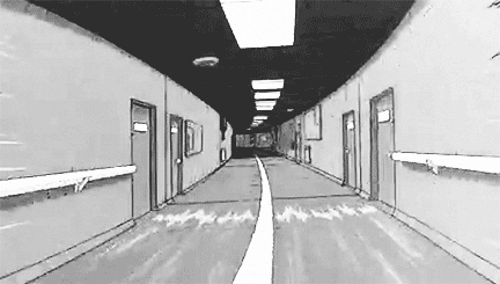The navigation system of the brain
06 Nov 2016
Neuroscientist tells about hippocampus neurons cognitive map of space and the brain.

The ability to navigate in space and determine the state of things is important for the survival of humans, mammals and other moving creatures. In recent decades, research in the field of spatial perception is particularly successful and become a subject of special interest to psychologists, neuroscientists and mathematicians. These studies made it possible to understand some of the strategies used by animals in the process of navigation, and identified a set of cell types responsible for processing spatial information. It has helped to define a framework for understanding the neural images and mechanisms underlying this basic cognitive abilities. Some of the key discoveries in the area briefly summarized below.
Cognitive map
In psychology, the beginning of XX century was dominated by the behavioral theory. Behaviorism understand the behavior of the animal as a result of the acquired sequences "stimulus - reaction", leading to the desired results. Most behavioral studies have been conducted on rats, which are trained to navigate the maze of different degrees of difficulty, to get the reward - food. According to behaviorists, rats learn to navigate by memorizing a sequence of actions (eg, the sequence of turns), which led to a tasty reward. However, Edward Tolman was the first to put into question this view. Tolman suggested that the animal has a series of internal systems that can flexibly guide it towards achieving the objectives. Tolman hypothesized that animals have the so-called cognitive map - a mental picture of the surrounding environment, which carries information on finding different key landmarks and their relationship with each other. This pattern supports the orientation in a complex changing environment. Tolman tested the hypothesis with a few experiments.
In one experiment, rats first to achieve the awards were trained to overcome a series of circular labyrinths. This problem is solved with a simple strategy of "stimulus - reaction". After training on this task annular portion of the maze was removed, and was built to replace part of the corridors, organized on the model of the sun's rays. Only one of these corridors led to the award. If you have previously used the strategy of animals "stimulus - response" to solve this problem, but this time they would not be able to solve this part of the problem in this manner. However, many of them choose the right corridor - a track they had never elected and have achieved awards. Tolman argued that animals could solve this part of the problem, as have formed a mental cognitive map of the maze, that allows to select new and adaptive routes.
To improve brain and cognitive function – use Cogitum, Cortexin, Phenotropil and Semax.
In other words, animals can move between two locations in the absence of information on the environment, such as in the dark, as they combine their internal signals. Examples of such signals are the vestibular system that monitors body movement, proprioception (sense of self-posture in space) indicates the position of the limbs, and efferent motor signals to report movements that the brain has recently ordered, and the body is made. Hurst and Marie-Louise Mittelsteadt checked whether gerbil rely on the integration path in the experiment, where the rodents had to find her cub on a circular arena and return to the house, located on the border of the arena. If gerbils slowly turned the arena, so they do not notice the rotation, the rodents were wrong on the way back - in proportion to the rotation, for which they have been rotated. This implies that in this task, they relied on their internal vestibular signals.
Neurons places
John O'Keefe and colleagues conducted a series of experiments with freely moving rats, during which they spent the extracellular recording activity of the hippocampus - the brain department, located in the medial temporal lobe. O'Keefe and his colleagues found that the activity of the main cell areas CA1 and Ca3 was almost exactly predicted spatial position of the animals. O'Keefe called these cells neurons place. Neurons places usually inactive, but greatly increase their activity when the animal passes through a place where there is an area of the neuron activation. Different cells are sensitive to different places of the surrounding area, so anywhere is active only a small group of cells, with an accuracy of encoding location of the animal. Moreover, at the population level neurons places provide a kind of "map" of the environment, such Tolmanovsky cognitive map. For a medium operation space of neurons is constant in time and allows the environment and the broad guidelines remain the same. However, in a different environment place cell can change its location or activity to stop the activity altogether. This process is called remapping. Thus, any medium will have a certain representation of the neuron space. Neurons place intensively studied for almost 40 years, it is found in various species, including mice, bats and humans.
Interestingly, the activity of neurons in the place seems vulnerable to the influence of the same variables that affect animal orientation. For example, the distal keys (reference points) or the surrounding environment geometry. For example, if the animals are in a simple environment with a key card on the wall as the sole reference point, then, if this card will be turned to a certain position, the position of the neuron places will be rotated as well. Neurons are able to place reliance on the information received from the paths of integration. They were seen in the use of internal signals in the experimental conditions that cause a conflict between the internal and external signals. However, under normal circumstances, mainly in the place cell activity affects the environment information.
Neurons in the direction of the head
Another type of neurons are neurons in the direction of the head. It was discovered by James Rankin and his colleagues. Unlike neurons head direction place cell action potentials can be activated at any place in the environment. Nevertheless head direction neurons are activated only when the animal's head is oriented in a preferred direction in the horizontal plane of the cell. Each neuron different preferred direction, and together, these cells may underlie a sense of direction. Cells were identified by the direction of the head in a wide range of areas of the brain - both cortical and subcortical structures such as the nucleus of the thalamus, and in the mamillary bodies, the entorhinal cortex, some of which information is projected directly into the hippocampus.
As place neurons, neurons direction head rely on environmental signals. Conditions that lead to neuronal remapping places lead to neuronal direction accompanying the rotations of the head. Nevertheless neurons direction different from the head space of neurons that are active in all environments. As they rotate, they do it is connected, as a single population. For example, if one cell has a preferred direction at 60 °, and the other - at 120 °, when the animal moves to another medium, two neurons change their preferred direction of activation together to maintain the same ratio angle of 60 °.
During the 1980s and 1990s, the area of neuroscience, dedicated to understanding the neural representations of the underlying spatial cognition, has been very productive, but to the nearest large opening had to wait two decades.
Lattice Neurons
In 2005, the active study of the hippocampus was re-launched due to the fact that May-Britt and Edward Moser discovered another type of neuron, which, as it seemed, was involved in the processing of spatial information. As neurons places this type of cells are activated at the time of being in a certain place. Although instead be activated only once in a particular environment, they were activated over the entire area a regular triangular pattern on a "tiling." Because of their regular and recurring nature Moser called these neurons "bars". Grids are the most numerous cells in the superficial layers of the middle of the entorhinal cortex (SEC), although they can be found in the deeper layers. Neuron lattice can be described in three ways: through its coverage (the distance between neighboring fields activation), orientation (its lattice axes to some reference direction) and the phase (two-dimensional lattice misalignment to an external point of support). Furthermore, lattice anatomically neurons organized into modules which have a similar scope and orientation, but whose phases are shifted by different values. The phase of such a neuron may change depending on the environment in which the animal is, but, as with neurons direction of the head, they are active in all environments.
Importantly, the changes in phases and lattice orientation consistent neurons within its module, but may vary in different modules. When the lattice neurons just opened, it was believed that they are the neural substrate for the integration path. Moreover, their discovery has attracted the attention of many theorists who assumed that the neural lattice can play an important role in the formation of spatial activity of other cells, particularly neurons place. Although recent studies have led to doubt this hypothesis, since the activity of neurons in space continues in the absence of activity of neurons in the lattice, and there is growing evidence that neurons in the lattice also affects the environment namely its geometry and the degree of novelty. However, scientists still believe that the most likely trellis neurons are a substrate for the integration of the territory and, of course, affect the activity of neurons in place, although they are not necessarily fully define it.
Neurons border
As already mentioned above, the geometry of the environment has a strong influence on the activity of different spatial neurons. In fact, early models of their activity assumed the existence of boundary neurons that encode the distance to the nearest boundary of the medium and provide inputs to the neurons place. In this model, it was assumed that these cells should be elongated along the field boundaries and specific environment must be controlled by the simple direction of the head. Such cells were really found about a decade ago, research groups and Moser O'Keefe independently in Subicle and CEA in rats. As expected, these cells are more active near the boundaries of the medium, such as walls or sharp edges, and were well-controlled area of the head.
For example, a neuron border is fully customizable to the border, which lies south of the animal. If the second boundary of the included parallel to the first edge, the neuron develops a new field of activation along the northern edge of a new frontier. Effect of neuronal activity in the border space of neurons requires immediate investigation. Although it is known that the cell boundaries are a projection on the hippocampus. Consequently, it can be assumed that their active forms Activity space cells. Total turns out that it has been found several types of cells, which are specialized in processing spatial information in the brain in rodents and mammals. These cells do well with the support of the animals ability to find their way. But as it relates to the human?
The spatial perception of the human
Well studied, that the hippocampus plays a major role in the formation of memory, or at least maintaining and playing short-term memory. Despite this, the scientists still there is a question whether to accept the human hippocampus, similar to the hippocampus of rodents, participation in the formation of spatial behavior. Thanks to modern technological advances in brain imaging studies (eg, functional MRI) neuroscientists were able to examine the involvement of the different areas of the human brain in the thinking process. In accordance with the above findings, derived from experiments with animals, these studies have confirmed the participation of the hippocampus in the regulation of various activities in space, especially those that require a flexible strategy of finding a way. Moreover, patients with intracranial electrodes implanted for medical purposes, provided a unique opportunity to explore the activity of individual neurons, which is the basis of human thinking. A certain number of these studies were based on the spatial experiments in which in the medial temporal lobe cells were found at the same place, and reaction to the lattice cells in rodents.
In addition, the discoveries made by experiments with animals, inspired researchers to investigate patients with damage to the hippocampus. These studies have shown that patients with a damaged hippocampus problems normally observed with a spatial behavior, in particular in finding the way to the intended target. Finally, common diseases associated with amnesia, for example Alzheimer's disease, also are due to the deterioration of the spatial perception. From these findings it implies indirectly that the neural connections that support spatial perception rodents, and can be found in humans.
In general, although most of the navigation system of the brain research is based on experiments with rodents, we have reason to believe that the discoveries made with the help of animals, can be transferred to humans, and thus provide a deep understanding of the neurobiological processes that support human spatial perception. Moreover, knowing about the role of the hippocampus in the mnemonic process, the researchers of this phenomenon can not only shed light on the mechanisms behind the healthy human thinking, but also to discover the weakened processes in memory disorders.

 Cart
Cart





